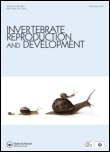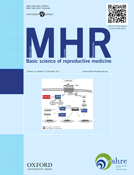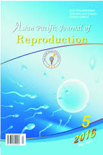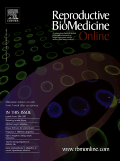
REPRODUCTION FERTILITY AND DEVELOPMENT
Scope & Guideline
Connecting researchers to the latest breakthroughs in fertility and development.
Introduction
Aims and Scopes
- Reproductive Physiology and Endocrinology:
Research focused on the hormonal regulation of reproduction, including studies on the roles of various hormones in reproductive processes, such as ovulation, spermatogenesis, and pregnancy. - Assisted Reproductive Technologies (ART):
Investigation into techniques such as in vitro fertilization (IVF), intracytoplasmic sperm injection (ICSI), and embryo cryopreservation, aimed at improving fertility outcomes in both human and animal models. - Genetic and Molecular Mechanisms:
Studies exploring the genetic and epigenetic factors influencing fertility and development, including the role of specific genes and molecular pathways in reproductive health. - Environmental and Nutritional Impacts:
Research examining how environmental factors, such as pollutants and dietary components, affect reproductive health and success, with a focus on both wildlife and agricultural species. - Comparative Reproductive Biology:
Comparative studies across different species, including mammals, birds, and reptiles, to understand the diversity of reproductive strategies and their evolutionary implications.
Trending and Emerging
- Impact of Environmental Stressors:
Research on how environmental factors, such as pollutants and climate change, affect reproductive health is gaining momentum, highlighting the importance of understanding the interplay between environment and reproduction. - Use of Omics Technologies:
There is an increasing trend towards the application of genomic, proteomic, and metabolomic techniques to unravel complex biological processes in reproduction, enhancing our understanding of fertility and developmental biology. - Focus on Microbiomes and Reproductive Health:
Studies exploring the role of microbiomes in reproductive health are emerging, indicating a new frontier in understanding how microbial communities influence fertility and development. - Sperm and Oocyte Quality Assessments:
Innovative methods for assessing sperm and oocyte quality, including the use of advanced imaging and molecular techniques, are becoming prevalent, reflecting a shift towards precision in reproductive technologies. - Interdisciplinary Research Collaborations:
There is a growing trend towards collaborative research that integrates insights from reproductive biology, endocrinology, genetics, and environmental sciences, fostering a holistic approach to addressing reproductive issues.
Declining or Waning
- Traditional Embryo Culture Techniques:
There has been a noticeable reduction in studies solely focused on conventional embryo culture methods, as newer technologies and methodologies gain prominence. - Invasive Reproductive Procedures:
Research involving highly invasive techniques for fertility assessment or treatment is decreasing, possibly due to a shift towards less invasive and more ethical approaches in reproductive medicine. - Aging and Reproductive Decline Studies:
While still relevant, the frequency of studies specifically addressing aging-related reproductive decline appears to be waning as newer areas of focus, such as epigenetics and environmental impacts, gain more traction. - Single-Species Focus Studies:
There is a trend away from studies that focus exclusively on one species, with a growing preference for comparative studies that encompass multiple species to draw broader conclusions.
Similar Journals

JOURNAL OF ASSISTED REPRODUCTION AND GENETICS
Pioneering Studies in Reproductive HealthThe Journal of Assisted Reproduction and Genetics, published by Springer/Plenum Publishers, serves as a pivotal platform for innovative research and advancements in the fields of reproductive medicine, genetics, and developmental biology. With an impact factor that positions it within the upper echelon of its categories—including Q1 rankings in Obstetrics and Gynecology and Reproductive Medicine—this journal plays a critical role in disseminating high-quality, peer-reviewed studies that significantly influence clinical practices and research directions. Renowned for its commitment to enhancing understanding in areas such as assisted reproductive technologies, genetic screening, and reproductive health, the journal attracts contributions from leading experts worldwide. With a broad scope encompassing original research, case studies, and comprehensive reviews, the Journal of Assisted Reproduction and Genetics continues to be an essential resource for researchers, healthcare professionals, and students dedicated to the advancement of reproductive sciences.

INVERTEBRATE REPRODUCTION & DEVELOPMENT
Advancing Knowledge in Reproduction and Development.INVERTEBRATE REPRODUCTION & DEVELOPMENT, published by Taylor & Francis Ltd, is a pivotal journal in the fields of Animal Science and Zoology, with a significant focus on the reproductive and developmental processes of invertebrates. Established in 1989 and running through 2024, this journal has become an essential resource for researchers, professionals, and students interested in the intricacies of invertebrate biology. With an impressive Q2 ranking in Animal Science and Zoology and a dedicated readership, the journal explores a variety of topics including reproductive mechanisms, developmental stages, and phylogenetic aspects of invertebrates. While currently not open access, the journal provides robust scholarly content that contributes to advancing knowledge in both basic and applied biological sciences. The Scopus rankings further underscore its relevance, particularly in the domains of developmental biology and genetics, making it a noteworthy publication for those engaged in this dynamic field of research.

Plant Reproduction
Advancing the Science of Plant ReproductionPlant Reproduction is an esteemed academic journal published by Springer, dedicated to advancing the understanding of reproductive processes in plants. With its ISSN 2194-7953 and E-ISSN 2194-7961, this journal serves as a vital resource for researchers and professionals in the fields of cell biology and plant science. Since its inception in 2013, it has been recognized in the Q1 Quartile for plant science, underscoring its significance and impact within the academic community, while maintaining a ranking of #79/516 in the Scopus database for agricultural and biological sciences. The journal embraces an Open Access model, enhancing accessibility for a broader audience of scholars and practitioners. As we continue to converge our research efforts towards 2024 and beyond, Plant Reproduction remains committed to exploring innovative findings and fostering collaboration in plant reproductive biology, thereby contributing significantly to the global understanding of plant systems and their ecological impacts.

MOLECULAR HUMAN REPRODUCTION
Pioneering Research for a Healthier Future in Reproductive MedicineMOLECULAR HUMAN REPRODUCTION, published by Oxford University Press, is a pivotal journal dedicated to advancing the field of reproductive biology. Since its inception in 1995, the journal has been recognized for its rigorous peer-reviewed research and substantial contributions to the understanding of molecular mechanisms underlying human reproduction. With an impressive impact factor and ranked within the top tiers (Q1 and Q2) across diverse categories including Embryology, Obstetrics and Gynecology, and Reproductive Medicine, it stands as an essential resource for researchers, healthcare professionals, and students alike. The journal aims to publish cutting-edge research that explores the complexities of human reproduction at the molecular and cellular levels, fostering a deeper understanding that can be translated into clinical practice. Although it currently operates under a subscription model, the valuable insights and groundbreaking findings featured within its pages continue to influence the trajectory of reproductive health research globally. Located in the heart of Oxford, United Kingdom, the journal remains committed to addressing vital challenges in the field and promoting innovative scientific dialogue.

Reproductive Biology
Unveiling the Secrets of Reproductive HealthReproductive Biology is a premier academic journal published by Elsevier, dedicated to advancing the field of reproductive science. With an ISSN of 1642-431X and an E-ISSN of 2300-732X, this journal has been serving the scientific community since its inception in 2001. It notably holds a Q1 ranking in Animal Science and Zoology as of 2023, underscoring its significant impact and prominence in this domain. The journal encompasses a wide array of topics surrounding reproductive biology, including but not limited to endocrinology and developmental processes, making it an essential resource for researchers and practitioners. Although it operates under a traditional access model, its comprehensive scope offers valuable insights that contribute to advancements in reproductive health, animal conservation, and biotechnology. Published in the Netherlands, Reproductive Biology aims to foster interdisciplinary collaboration and innovation, ultimately enriching our understanding of reproductive mechanisms across various species. Researchers, professionals, and students alike will find this journal an indispensable platform for disseminating groundbreaking research and engaging with the latest findings in reproductive science.

Human Reproduction Open
Empowering knowledge sharing in reproductive health.Human Reproduction Open, published by Oxford University Press, is a prestigious open-access journal dedicated to advancing the field of reproductive health and medicine since its inception in 2017. With an E-ISSN of 2399-3529, the journal provides a vital platform for researchers, clinicians, and academics to disseminate innovative findings in obstetrics, gynecology, and reproductive medicine. It is recognized for its impactful contributions, holding an impressive rank of #3 out of 209 in Medicine - Obstetrics and Gynecology, #2 out of 90 in Medicine - Reproductive Medicine, and #1 out of 21 in Medicine - Embryology, placing it in the top percentiles of its respective categories. The open-access model ensures that research is freely accessible, fostering collaboration and knowledge sharing among professionals and students alike. With a commitment to high-quality, peer-reviewed publications, Human Reproduction Open plays a crucial role in shaping the future of reproductive health research and practice, serving as an essential resource for those dedicated to improving outcomes in this dynamic field.

Asian Pacific Journal of Reproduction
Pioneering Insights into Reproductive PracticesAsian Pacific Journal of Reproduction is a dynamic open-access journal specializing in a diverse array of topics related to reproduction across various species, including humans, animals, and plants. Published by Wolters Kluwer Medknow Publications, this peer-reviewed journal has been committed to disseminating high-quality research since its inception in 2012. With an accessible ISBN of 2305-0500 and E-ISSN 2305-0519, the journal has rapidly established itself within the academic community, evidenced by its categorization in Q3 and Q4 quartiles across multiple fields, including Obstetrics, Gynecology, and Animal Science. Researchers are encouraged to contribute their findings to foster a deeper understanding of reproductive health and practices in the Asian Pacific region and beyond. The journal's inclusive scope and emphasis on interdisciplinary collaboration make it a crucial platform for professionals and scholars seeking to stay at the forefront of reproductive research.

REPRODUCTIVE BIOMEDICINE ONLINE
Pioneering insights in reproductive healthcare and biomedicine.Reproductive Biomedicine Online, published by Elsevier, is a leading peer-reviewed journal that has established itself as a pivotal resource in the fields of Developmental Biology, Obstetrics and Gynecology, and Reproductive Medicine. With an impressive Impact Factor and a Q1 ranking in its respective disciplines as of 2023, this journal provides a platform for innovative research and comprehensive reviews that contribute to advancements in reproductive healthcare. The journal boasts rigorous Scopus rankings, placing it within the top tiers of its categories, which underscores its significance in shaping contemporary biomedical inquiry. Although not open access, it remains widely accessible through institutional subscriptions, making its wealth of knowledge available to researchers, clinicians, and students alike. Since its inception in 2000, Reproductive Biomedicine Online has been committed to fostering a deeper understanding of reproductive processes and biomedicine, ensuring that its content remains relevant and impactful in addressing challenges in reproductive health, thereby championing exceptional scientific discourse.

MOLECULAR REPRODUCTION AND DEVELOPMENT
Exploring the intricacies of life at the molecular level.MOLECULAR REPRODUCTION AND DEVELOPMENT is a prestigious peer-reviewed journal published by WILEY, specializing in the intricate domains of Cell Biology, Developmental Biology, and Genetics. Since its inception in 1988, this journal has been a vital platform for disseminating pioneering research and innovative methodologies that advance our understanding of molecular mechanisms driving reproduction and development. With a current impact factor reflective of its significance in the field, MOLECULAR REPRODUCTION AND DEVELOPMENT is ranked Q3 in both Cell Biology and Developmental Biology, and Q2 in Genetics, underscoring its relevance and scholarly contribution. Catering to a diverse audience of researchers, professionals, and students, this journal not only showcases cutting-edge findings but also aims to foster interdisciplinary exchanges that enhance scientific collaboration. By exploring critical biological processes, it ultimately contributes to the broader understanding of health and disease in various organisms, making it an essential resource for anyone dedicated to the life sciences.

THERIOGENOLOGY
Connecting practitioners and researchers in the realm of animal health.THERIOGENOLOGY is a prestigious academic journal published by Elsevier Science Inc, dedicated to the field of veterinary reproduction and animal science. With an impressive impact factor and recognized as a Q1 journal in various categories including Animal Science and Zoology, Equine, Food Animals, and Small Animals, THERIOGENOLOGY has established itself as a vital resource for researchers, practitioners, and students alike. Founded in 1974, the journal covers a broad spectrum of topics related to reproductive physiology, biotechnology, and the health management of food and companion animals. Although it does not currently offer open access, researchers can benefit from its comprehensive articles and reviews that push the boundaries of knowledge in veterinary science. With a significant placement in the Scopus rankings, ranking #1 in multiple veterinary categories, THERIOGENOLOGY serves as an essential platform for advancing the understanding of reproductive strategies and practices, thereby contributing directly to the fields of animal husbandry and veterinary medicine.